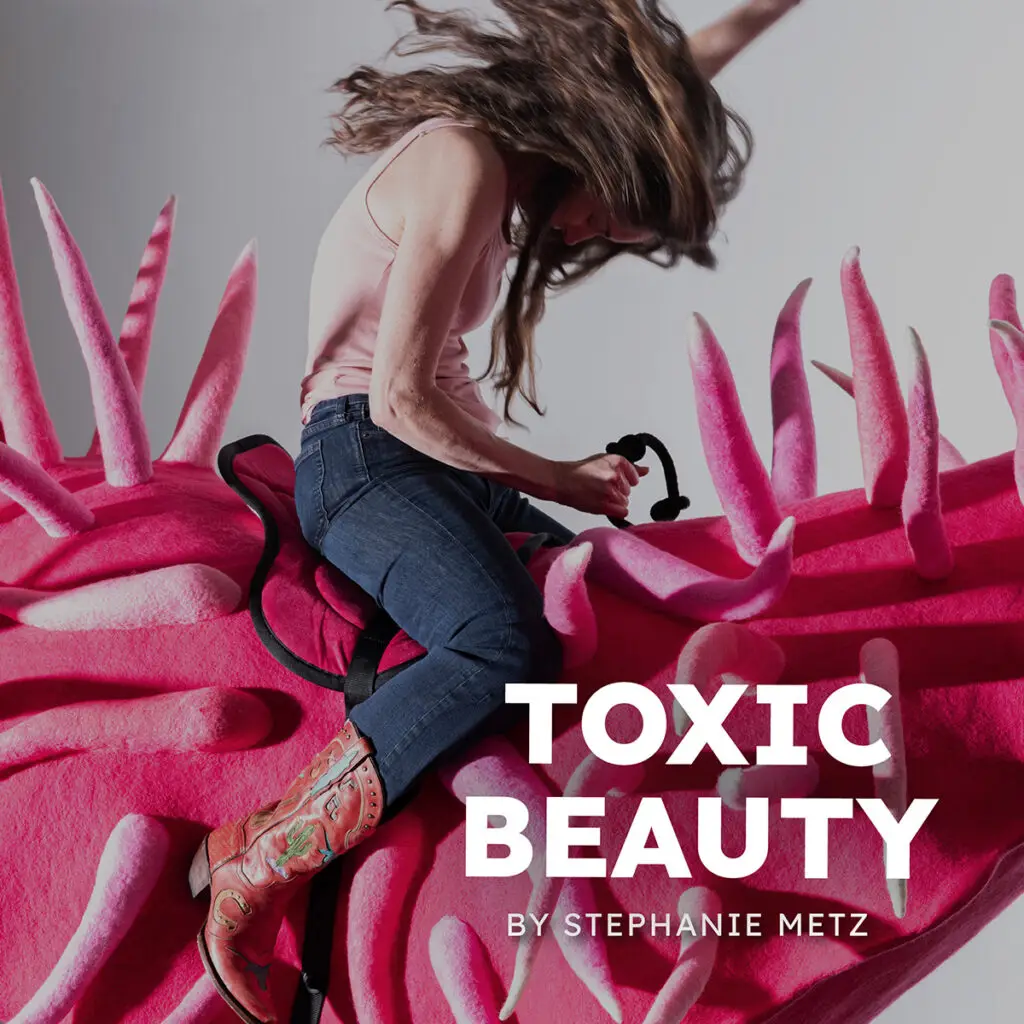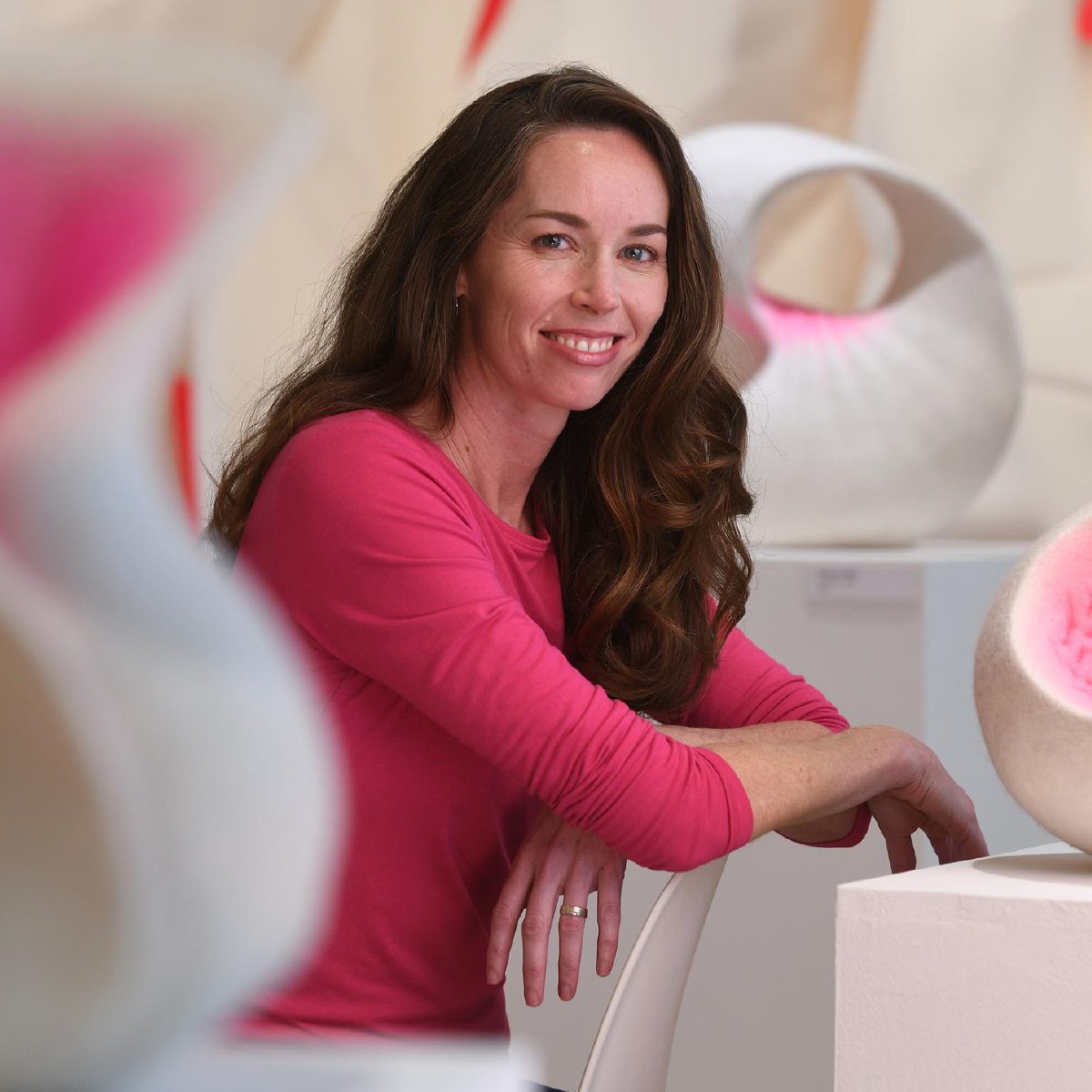When the Seattle Art Museum opened the Olympic Sculpture Park, the site was congested with signs reading DO NOT TOUCH THE ART because sculptures are subject to injury from visitor engagement – even the oil on your fingertips could damage or change them. Yet sometimes a sculpture is made for physical interaction: witness our rideable mechanical soft form sculpture, built over an actual mechanical bull and surrounded by a cushion to catch your fall.
Toxic Beauty is designed as an immersive art experience that engages sight, touch and motion. It’s a bright pink, ten-foot-long nudibranch (sea slug) covered in waving appendages. Take your turn in the saddle hanging onto the rope while the creature gently rolls, turns, and bucks in a mesmerizing fashion. While this spectacle may seem like the embodiment of science fiction, it’s actually based on a real species of sea creature that measures only half an inch long in real life.
California-based artist Stephanie Metz has created a felted wool sculpture that merges high-craft with low-brow entertainment, resulting in a conceptually-driven sculpture that challenges the viewer to reconsider their relationship with sculpture and to pay attention to the little things. Toxic Beauty portrays a Hopkins Rose nudibranch (rhymes with ‘tank’). Normally found in tide pools along the California coast, this species is slowly making its way northward as water temperatures rise with global warming. Although it appears beautifully hued to our human senses, the bright pink colors are a warning to other sea life since it sports toxic secretions and stinging cells. The Hopkins Rose gets its color and poison from its food source, a coral-like pink invertebrate called a bryozoan.
Metz chose this flamboyantly colorful and exuberantly weird creature for Cannonball Arts for five reasons:
1 – it embodies the way beauty is open to interpretation: what is a warning to one audience can be a seduction to another
2- it exemplifies the metaphor “you are what you eat” both literally and figuratively: what you take in is what you have available to put out into the world, for good or bad
3- it serves as an indicator species for climate change as it generationally works it way north
4- its form, color, and motion translate well into a larger-than-life interactive sculpture
5- it celebrates paying attention to obscure yet amazing natural wonders



